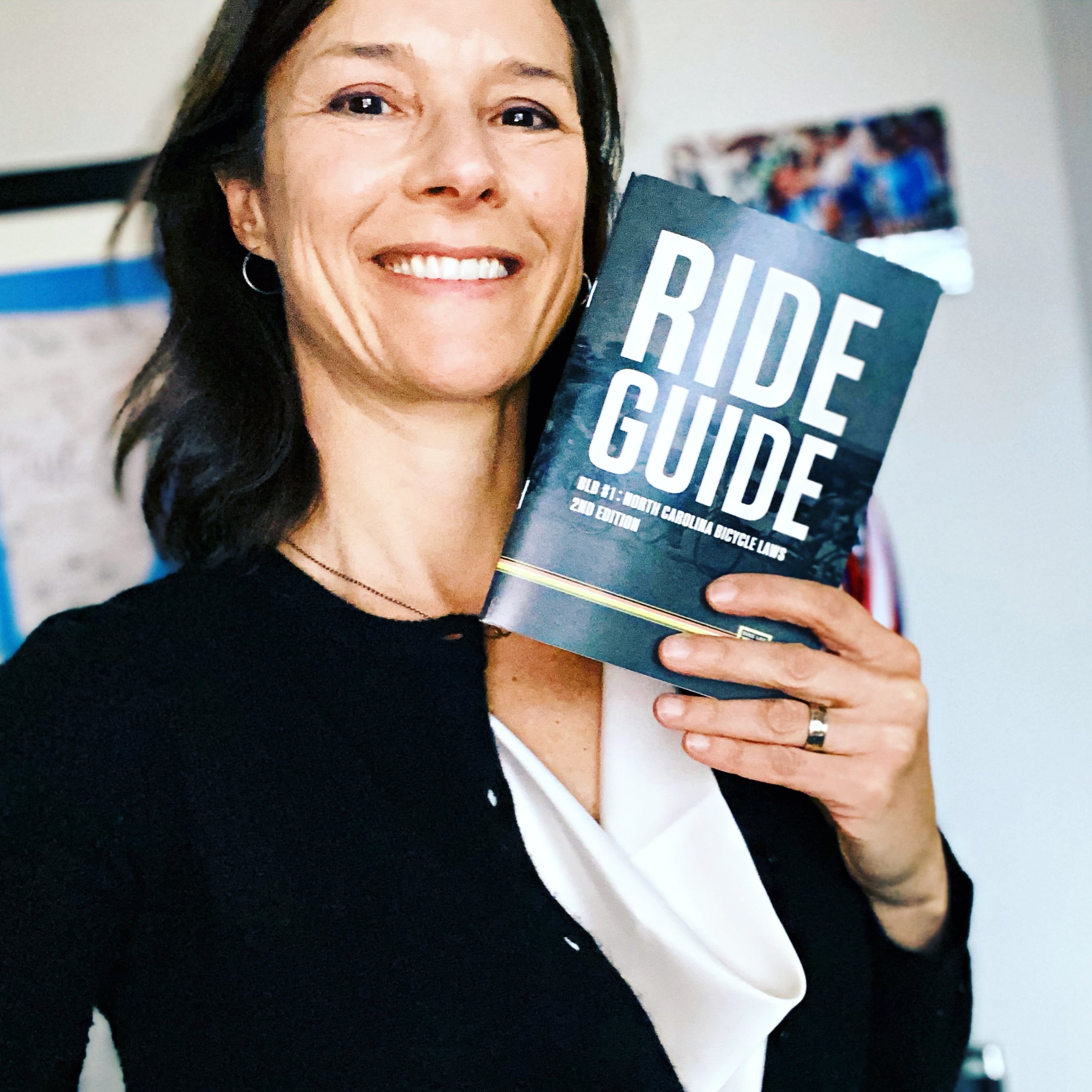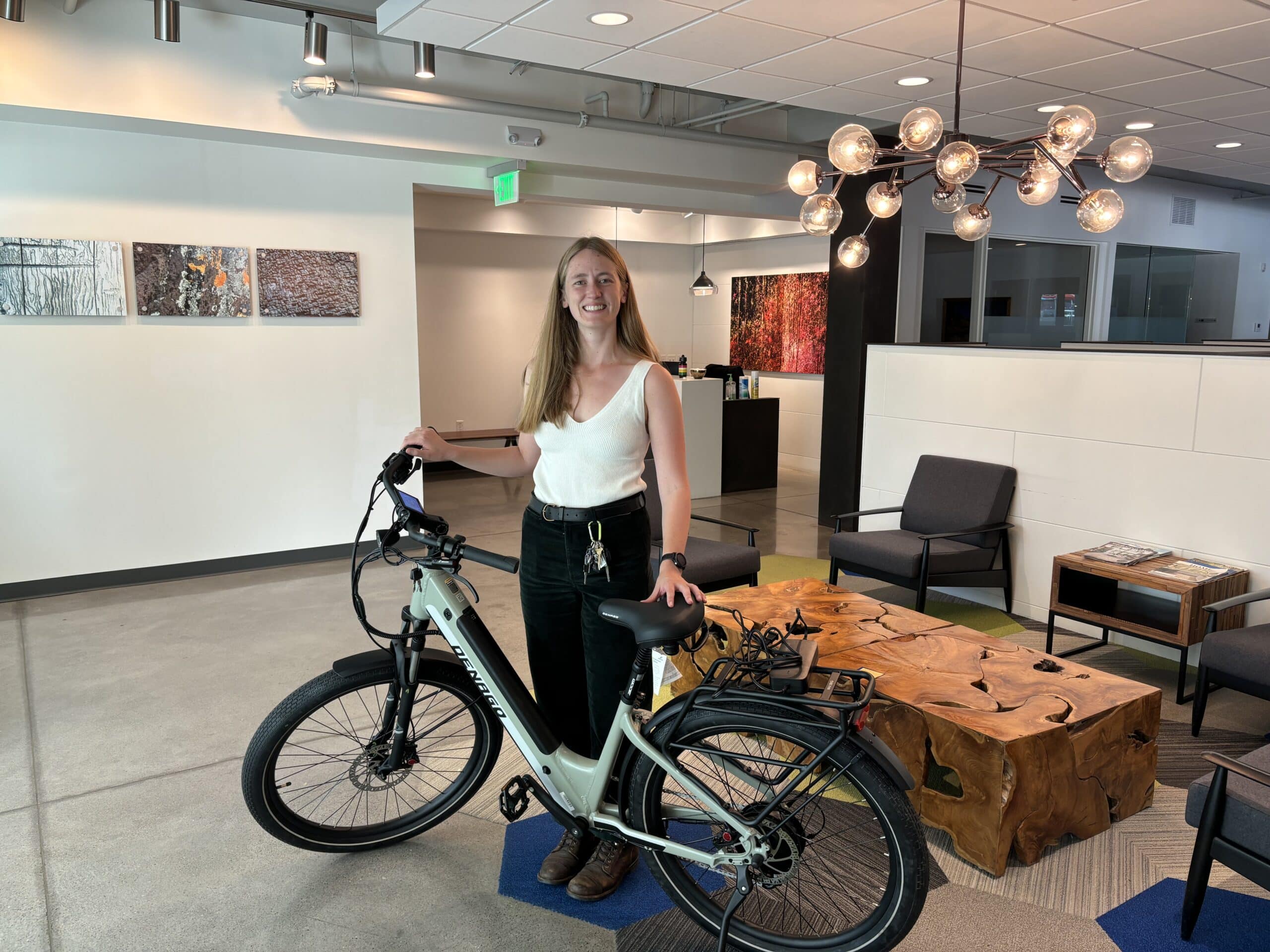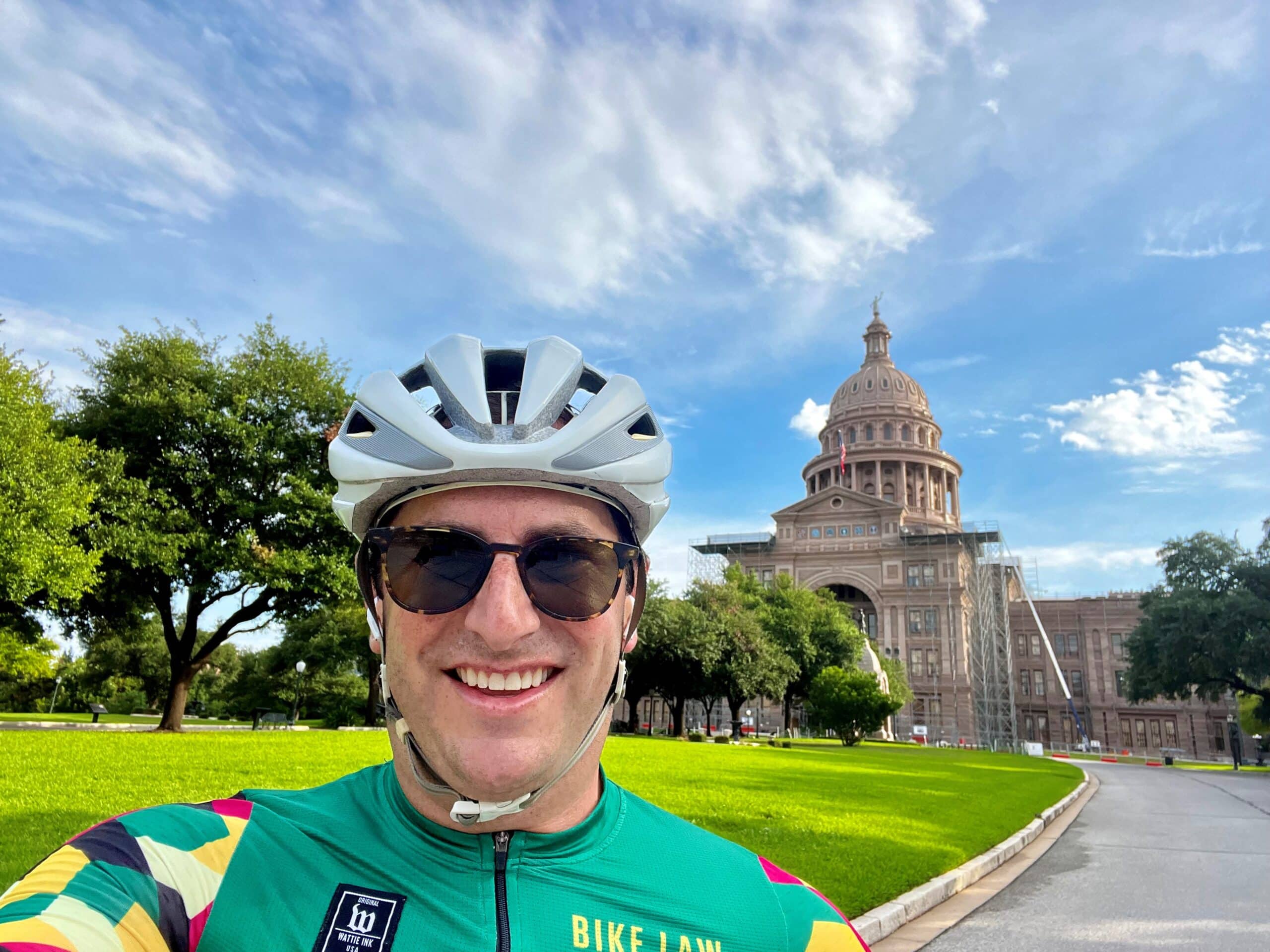Guest post by Bike Law Ambassador Nicole Van Baelen
The pandemic has affected our lives in many different ways. For me, working from home has provided both the opportunity, and the need, to spend more time than usual riding my bike. While riding the 3500 miles I have logged so far in the saddle this year, I have reflected on the many joys, and also the challenges, of cycling. As a Bike Law Ambassador in North Carolina (where Ann Groninger is the Bike Law attorney), I am particularly attuned to the importance of safe cycling and better biking for all.
One of the hardest things for most of us to do in life is to look at situations from the other person’s perspective. This is just as true on the bike as anywhere else, and during my many hours on the bike I spent some time reflecting on what would happen if we all practiced looking at each other’s point of view more often. At the end of the day when we talk about bike and road safety it doesn’t matter who is right; what matters is getting home safely.
Some general guidelines that I keep in mind while riding also help guide the way I conduct my life in general:
Preparation is everything: Know where you are going. Know the route and be prepared for any potential unknown interactions. Understand the route (analyze challenging intersections or heavier traffic areas, … and if you don’t know them, be prepared to slow down to have time to assess them). Wisely choose the time of day during which you’ll ride. f you are riding for fun or training, try to avoid the busier times. Ride with charged lights if they’re required, bring sufficient fuel (food and drinks) and dress appropriately.

Awareness leads to understanding: Whether you are riding alone, with a few people or in larger group, being aware of your surroundings is key. When riding with groups I personally prefer to ride with cyclists I know as the ride becomes more predictable when you are familiar with each other’s style of riding. It is critical to communicate your intentions while trying to also understand the intentions of your audience (all other road users). Like making eye contact with others in a conversation, a good communicator should be monitoring the audience for their views and intentions and adapting communications accordingly. We all have the responsibility to take safety seriously and do whatever we can to keep ourselves and others safe. We all use the same roads; we can work together to use them harmoniously and as safely as possible.
Timing is key: Communicating with other road users at the right time is important. Signaling a change too early or too late can cause miscommunications or misjudgments and create an unintended but unsafe situation. Taking the right action at the right time and making sure that your communication is clear and visible can make a huge difference and create a positive impression on other road users.
Respect rules the world: When negative interactions occur, I try to always take the high road. I step back and remind myself that there is a person driving the car and I try to understand that person’s point of view. This is not easy when it feels like that person doesn’t care about my life or safety, but it helps remove animosity and gives me a starting point to seek to build compromise in our communications to diffuse potentially tough and/or unsafe situations. The best response is to take a deep breath (and maybe a short break), and refocus and reconsider your strategy. Too often, as emotional beings, we let the heart dominate the head. Try to stay a second ahead by remaining calm and taking a moment to focus and center in on your message and meeting the other road user at their starting point. It pays off in life in general and will hopefully contribute to creating a safer outdoor space for everyone.
Bike happy! Bike safe!

North Carolina lawyer and Bike Law founder, Ann Groninger, has advocated at the state level on behalf of bicyclists in North Carolina for over 15 years. Ann has offices in Charlotte and Durham and has helped bike accident clients in Asheville, Raleigh, Durham, Greenville, Wilmington, Fayetteville, and throughout the state. Read more about Ann on her bio page.








